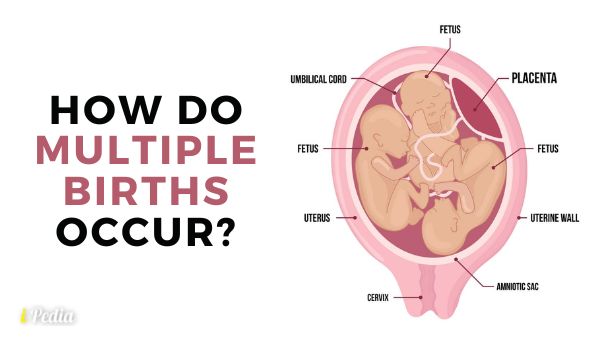Over the past twenty years, there has been an upsurge in the number of multiple births. This rise is mostly attributable to the fact that one-third of pregnant women are over thirty and have a higher likelihood of having multiple pregnancies. The use of reproductive treatments and medications is another factor contributing to the rise in multiple births. Identical/monozygotic multiples and fraternal/dizygotic multiples are the two main categories of multiples.
Identical/monozygotic multiples:
Genetically identical multiples known as identical/monozygotic multiples are produced from a single fertilized egg. Identical twins and multiples are common names for monozygotic multiples. They would all share the same gender and appearance.
Identical/monozygotic multiples:
The incidence of identical multiples is thought to be a random occurrence that is unaffected by a person’s age, race, or genetic makeup. Every 1,000 live births, 3 to 4 identical multiples are born.
Fraternal/dizygotic multiples:
Dizygotic multiples, often known as fraternal multiples, are produced when several eggs are fertilized by several sperm. There could be many genders in these multiples. Genetically, this type of multiples would be no different from typical siblings.
Fraternal/dizygotic multiples:
Fraternal/dizygotic multiples are the most prevalent kind of multiples. Dizygotic multiples frequently develop as a result of infertility therapies. The fact that older women are more likely to have multiples and that more women nowadays are getting pregnant later in life also contributes to the rise in fraternal multiples. Women with a higher body mass index (BMI), who recently stopped using hormonal birth control, and those who have had more pregnancies are also more likely to have fraternal multiples.
Which category do higher-order multiples (triplets, quadruplets, etc.) fall into?
Triplets, quadruplets, and other higher-order multiples are all variations on identical or fraternal multiples. For instance, one zygote (an egg fertilized by one sperm) might divide into three to produce triplets. This implies that the triplets would share the same genetic makeup. Additionally, if one of two zygotes splits in half, triplets might result. As a result, two of the triplets would share the same genetic makeup, while the third child would be regarded as a fraternal multiple. Quadruplets and other multiples present similar situations.
Also Read – What Is The Difference Between Identical And Fraternal Twins?



